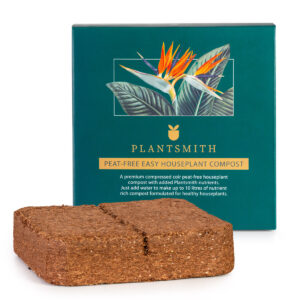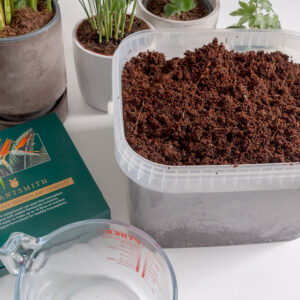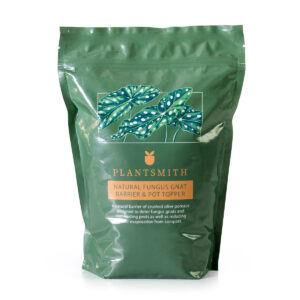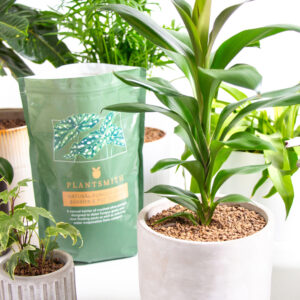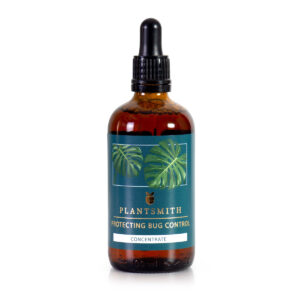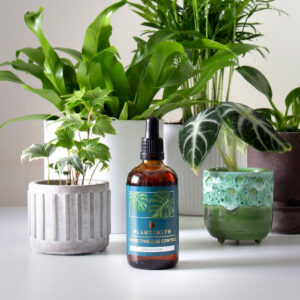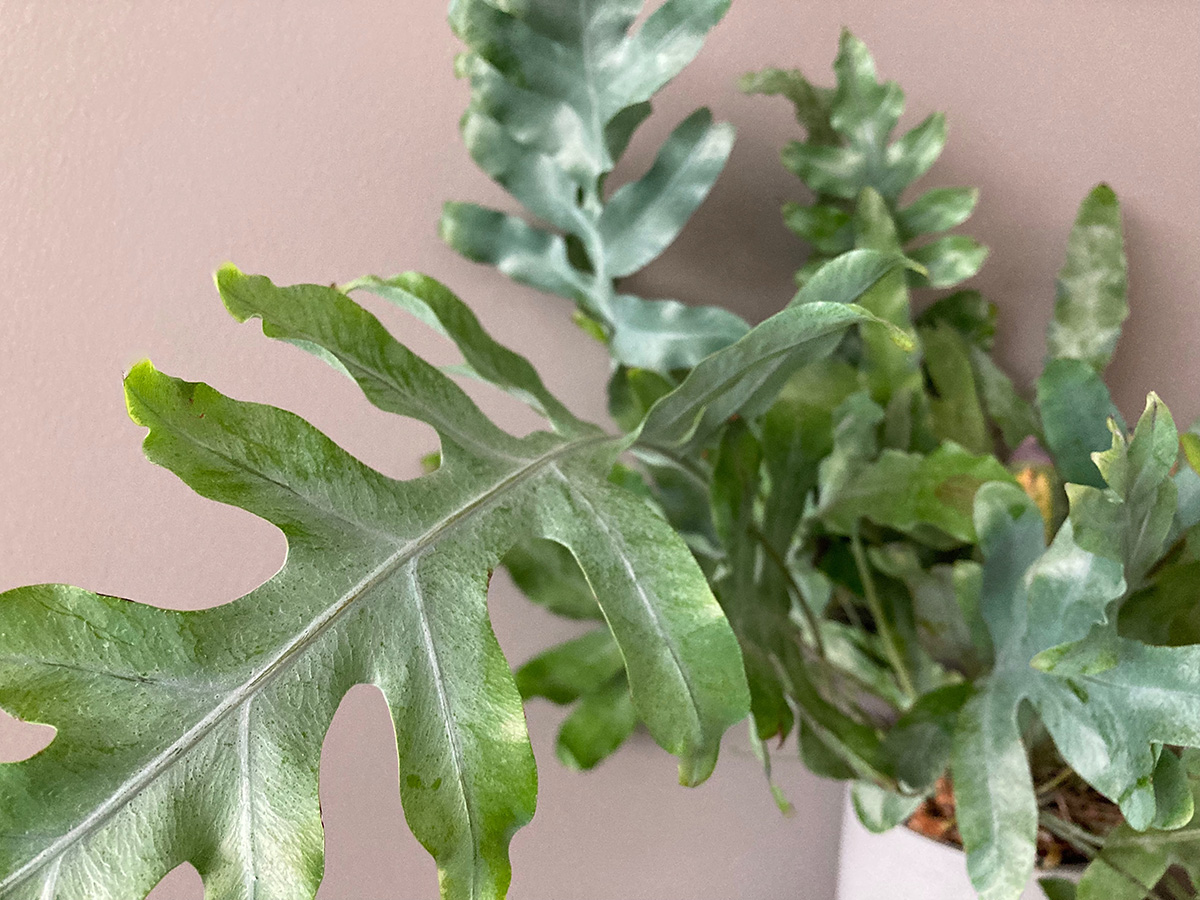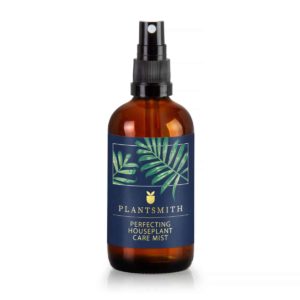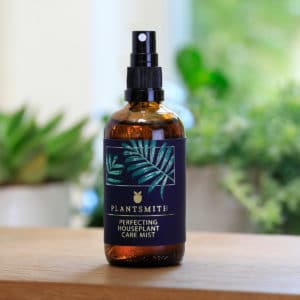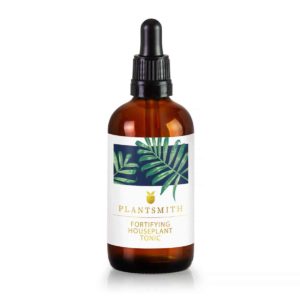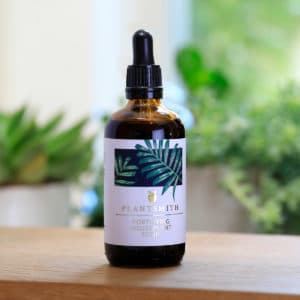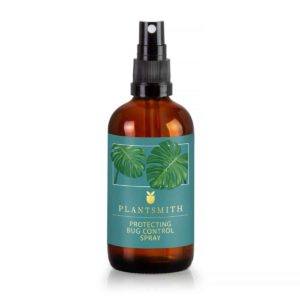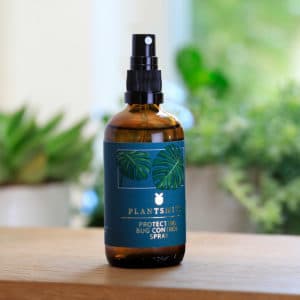Phlebodium aureum, the ‘Blue Star’ fern is an epiphyte that grows on trees throughout eastern Americas, the Caribbean and South American tropical cloud forests, absorbing its food and moisture from furry modified plant stems known as rhizomes.
It can grow to a metre high in the wild and has stunning silver-blue wavy-edged foliage; requiring little intervention, ‘Blue Star’ ferns make a perfect houseplant for busy people. Read on to discover what this fern needs to thrive.
Light
Phlebodium are easy to please; they can tolerate low light but perform best in bright indirect sunlight. Keep them away from direct summer sunlight as this can scorch leaves and pull them out of dark corners during winter.
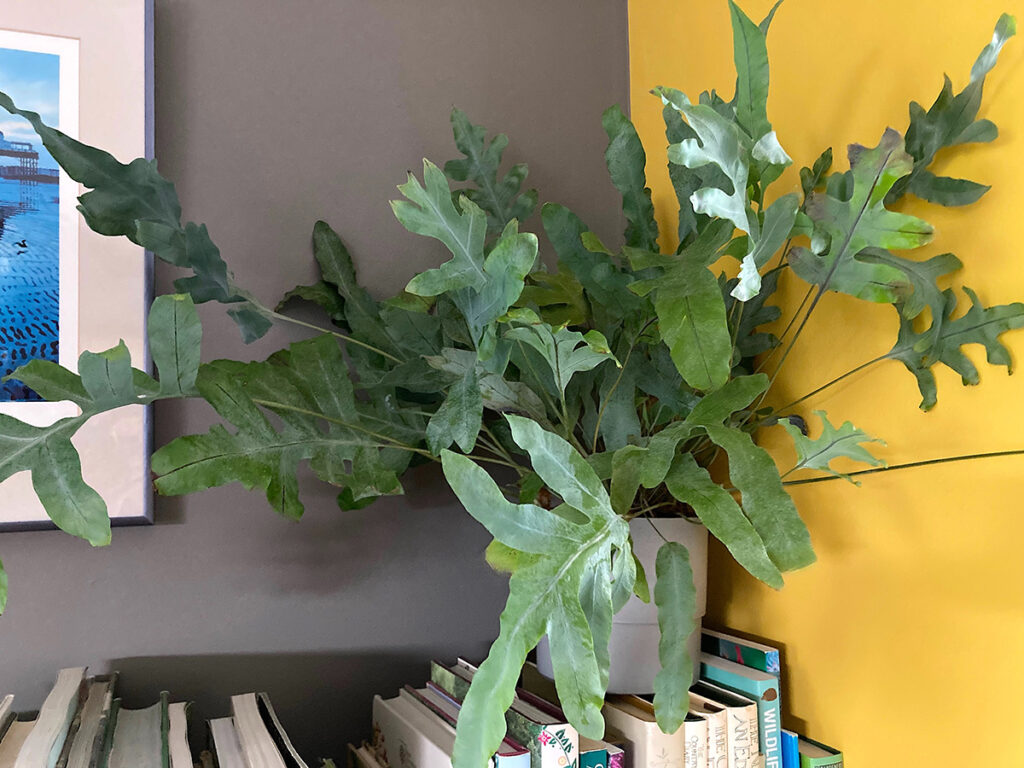
Water
‘Blue Star’ ferns like moist soil so keep them well watered; about once a week should cover it but if you forget, do not worry, these plants are tough and can cope with being ignored for a while.
Like many houseplants they dislike sitting in water as soggy roots can rot. Use rainwater or deionised water over tap water; hard water can contain minerals which hinders the fern’s growth. Plunging the fern into a bucket of water then allowing the water to drain away is a good way to make sure all the rhizomes have been watered.
Throughout autumn and winter, water from water buts can be very cold so leave a filled watering can to acclimatise indoors to room temp before using it or you might give your houseplants cold water shock. If you are changing the water from your fresh water fish tank then do not tip it down the drain but pop it on your houseplants; this will also be a good source of natural nutrients.
Temperature
Phlebodium’s are native to humid tropical rainforests so ideally place your fern in a steamy bathroom or kitchen. Optimal room temperatures range from 15 to 24°C (60-75°F). These ferns are fairly tolerant of temperature but steer clear of draughts and dramatic fluctuations in temperature. They can cope with periods of 10°C (50°F) for a short while, just be mindful of your plants if they are living in unheated conservatories or porches.
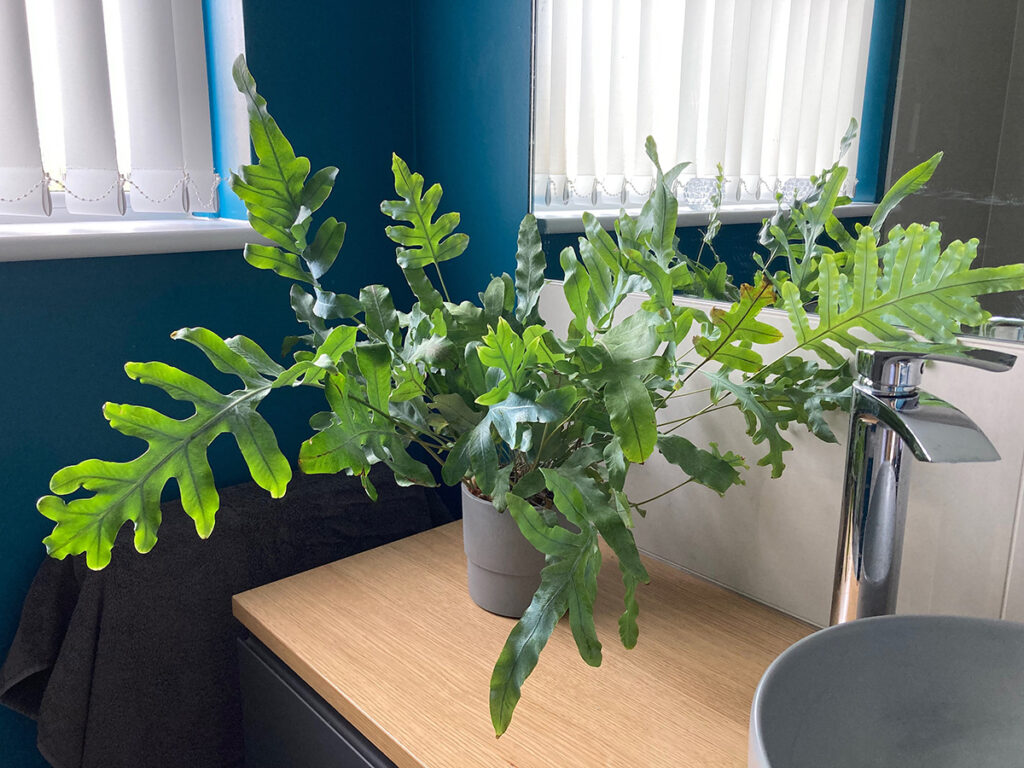
Spray foliage every day with a fine mist of rainwater or to increase nutrients as well as humidity, use Plantsmith Perfecting Houseplant Care Mist. Misting helps compensate for the dry air in our homes, particularly over winter once the radiators are back in action by temporarily increasing humidity surrounding the plant.
Grouping houseplant pots together can also raise humidity; stand plant on a tray of pebbles or invest in a humidifier.
Soil
As Blue ferns naturally grow without soil, these epiphytic plants will thrive in orchid bark which has a loose consistency but if using houseplant compost make sure you add plenty of perlite, grit or LECA for aeration.
Repot your plant every couple of years from spring to summer to refresh the mix and dispel any mineral salt build up or pests.
Fertiliser
‘Blue Star’ ferns are not heavy feeders; applying a diluted houseplant feed every couple of months from spring to autumn will be ample.
Over fertilising can be detrimental to houseplant health; mineral salts can build up and burn the roots but a balance of essential nutrients and minerals will help keep houseplants healthy and reduce the likelihood of plants succumbing to pests and diseases.
Plantsmith’s Fortifying Houseplant Feed & Tonic has been formulated with an optimum ratio of nutrients for houseplants providing a perfect balanced blend of potassium, iron, magnesium, kelp and essential macro and micro nutrients to encourage strong, healthy growth.

Shake the bottle then add 5 ml (approx. 4 pumps from 500ml bottle) or dilute one pipette from the 100ml bottle per litre of tepid rainwater; mix then water onto the soil.
Problem Solver
Good news, ‘Blue Star’ ferns are non-toxic to cats, dogs and humans and it is pretty much trouble free, but will tell you if it is not happy with a few simple indicators.
Brown tips
Brown tips on the foliage can be a sign of drying out, mineral build up from tap water or over exposure to sunlight. If brown tips start appearing, think about relocating your fern to a more favourable spot and check you are using rainwater or boil the kettle and leave the water to cool overnight so minerals can dissipate. Then, happily water your houseplant safe in the knowledge that the water will not be causing damage to your plant.
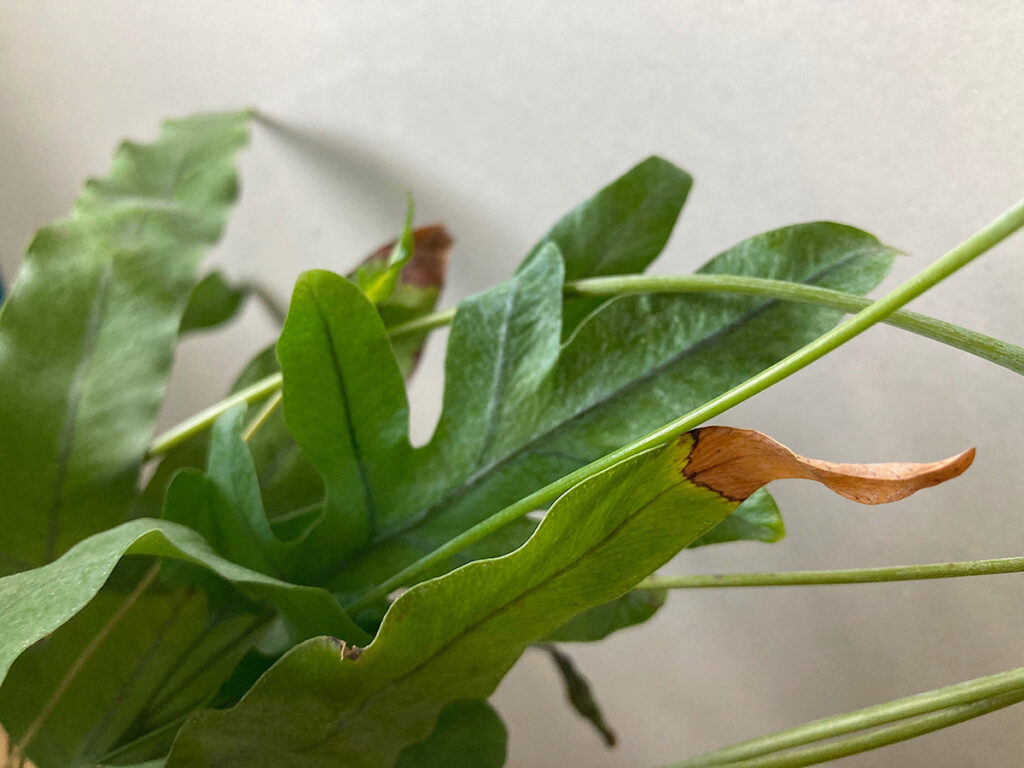
Yellow foliage
Foliage turning yellow can be a sign of root rot. Investigate yellowing leaves by taking the plant out of its pot to check if it is waterlogged.
Pests
Phlebodium aureum is not prone to houseplant pests but keep an eye out for scale, mealy bugs, aphids and spider mites, just in case!
Repel pests by regularly spraying with Plantsmith’s Protecting Bug Control Spray which is 100% vegan friendly and cruelty free, providing plants with a wealth of essential nutrients. Plantsmith’s Protecting Bug Control Spray blends natural surfactants alongside iron chelate, magnesium and manganese chelate to help boost vigour.
Propagation
It is always nice to get plants for free and propagation is a great way to increase your houseplant collection or make gifts for friends.
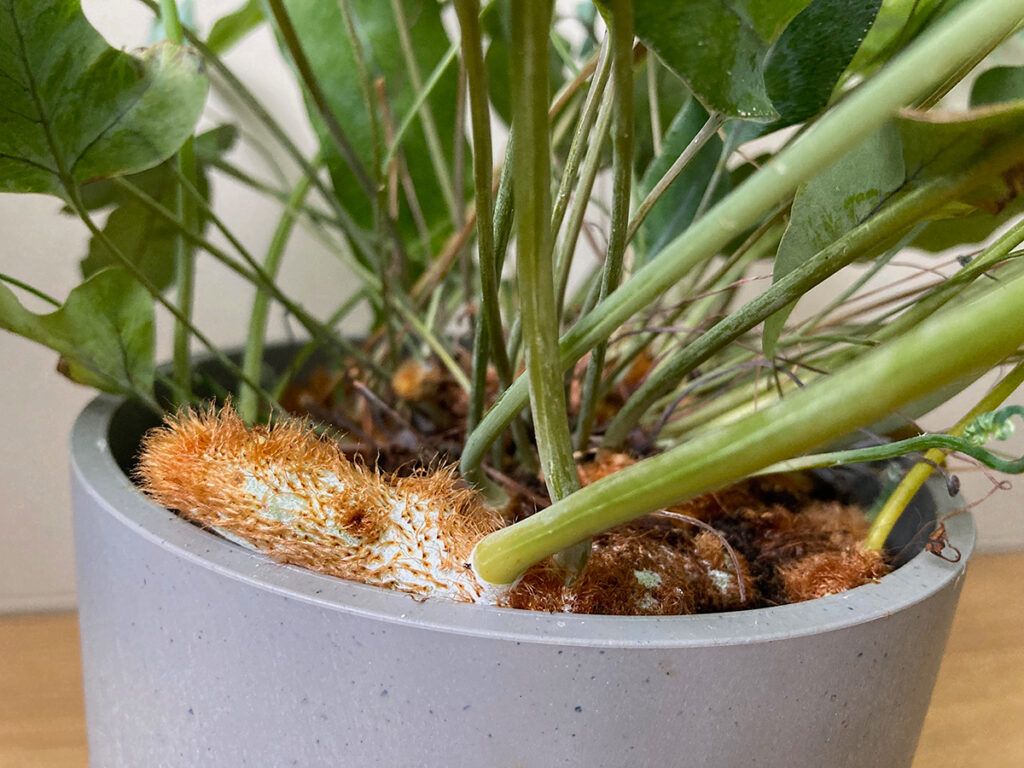
Once the parent plant is mature you can propagate by dividing the hairy rhizomes. Simply remove the plant from its pot and look for rhizomes that have shoots growing from them, then be brave, cut the rhizome into separate smaller sections and pot these on into free-draining soil. Make sure the division keeps in contact with the soil and over the next few months your plant should transform into an independent teenage houseplant!
Fun Facts
Don’t try this at home but Phlebodium aureum have been used for centuries in Central American folklore medicine to treat a wealth of ailments from skin disorders to asthma and heart disease and is even used as a UV filter sunscreen.
The ‘blue star’ fern is also known as ‘golden polypody’ and ‘cabbage palm fern’ and is a good air purifier within the home.
